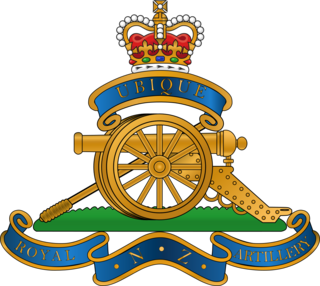
The Royal Regiment of New Zealand Artillery is the artillery regiment of the New Zealand Army. It is effectively a military administrative corps, and can comprise multiple component regiments. This nomenclature stems from its heritage as an offshoot of the British Army's Royal Artillery. In its current form it was founded in 1947 with the amalgamation of the regular and volunteer corps of artillery in New Zealand. In 1958 in recognition of services rendered it was given the title the Royal Regiment of New Zealand Artillery.
Operation Protea was a military operation during the South African Border War and Angolan Civil War in which South African Defence Forces (SADF) destroyed a number of South West Africa People's Organisation (SWAPO) bases in Angola. During the operation, which took place from 23 August to 4 September 1981, up to 5,000 SADF soldiers occupied Cunene province, Angola.
Operation Prone was a proposed military operation by the South African Defence Force (SADF) and South West African Territorial Force (SWATF) during the South African Border War and Angolan Civil War between May and September 1988. With the advance of the 50th Cuban Division towards Calueque and the South-West Africa border, the SADF formed the 10 SA Division to counter this threat. The plan for Operation Prone had two phases. Operation Linger was to be a counterinsurgency phase and Operation Pact a conventional phase.

The South African Army Artillery Formation is the controlling entity of all South African Army artillery units. It draws much of its history from the South African Artillery, established in 1934 but with roots that reach back to 1921. The formation consists of both regular and reserve units. There is a separate South African Army Air Defence Artillery Formation that directs army anti-aircraft warfare units.
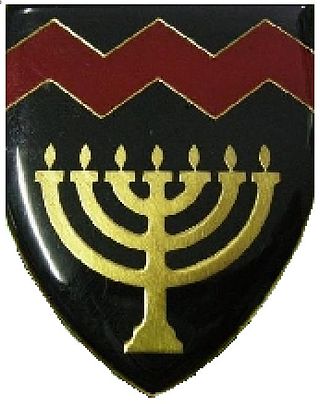
Regiment Potchefstroom Universiteit is an artillery regiment of the South African Army. As a reserve unit, it has a status roughly equivalent to that of a British Army Reserve or United States Army National Guard unit. It is part of the South African Army Artillery Formation.
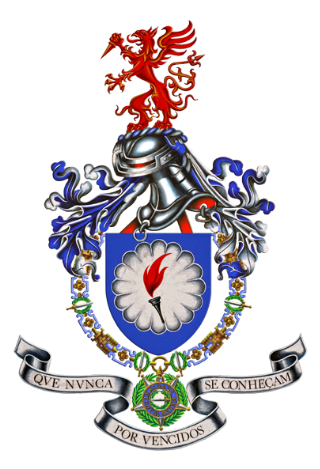
The Regimento de Paraquedistas, based in Tancos, Portugal, is a unit of the Portuguese Army and serves as the instruction center for recruitment and training of the Portuguese paratroopers. This unit includes an entire battalion, acting as support and reserve for airborne units which contains for example, military war dogs and airborne pathfinders and an instruction battalion responsible for the forming of new paratroopers.

The Sri Lanka Artillery (SLA) is the artillery arm of the Sri Lanka Army. It is made up of ten regular regiments and two volunteer regiments. The SLA is headquartered at Panagoda Cantonment, Panagoda.
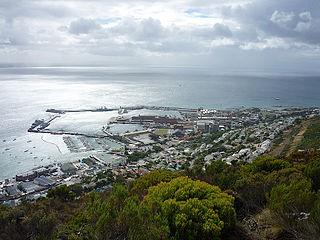
South Africa currently does not have a marine corps, though in the past it did. It was originally set up as a sub-branch of the South African Navy during the apartheid era, with the primary purpose of protecting the country's harbours (1951-1955). Then it was recreated in 1979 during the South African Border War as 1 Marine Brigade with the aim of serving as marine infantry (1979-1990). Today, the SAN Maritime Reaction Squadron is the closest analogue to a marine corps South Africa has.

The Regiment of Artillery is a combat/fighting arm of the Indian Army, which provides massive firepower during all ground operations of the Indian Army. It is a successor to the Royal Indian Artillery (RIA) of British Indian Army, which itself traces its origins to the formation of Bombay Artillery in 1827.

The 3rd Battalion, 319th Field Artillery Regiment is the field artillery battalion that directly supports the 1st Brigade Combat Team, 82nd Airborne Division. Known as the "Gun Devils", 3–319th AFAR has participated in battles from World War I to the current day, and is one of the most highly decorated field artillery units in the United States Army. The battalion's mission is "3-319th AFAR stands ready to deploy worldwide within 18 hours of notification, execute a parachute assault and conduct full-spectrum operations. Specifically, the battalion will provide responsive lethal and nonlethal fires in support of forcible entry and airfield seizure, and integrate and synchronize the effects of fires to achieve the 1BCT commander's intent."
The Battle of Ap Gu occurred during 31 March and 1 April 1967 during Operation Junction City, a search and destroy mission by American military forces in Tay Ninh Province of South Vietnam, to the west of the capital Saigon. The battle near the border with Cambodia left 609 Viet Cong (VC) killed according to US sources, with 5 captured, and over 50 weapons of all types recovered, while the Americans lost 17 killed and 102 wounded.

44 Parachute Brigade was a parachute infantry brigade of the South African Army. It was founded on 20 April 1978, by Colonel Jan Breytenbach, following the disbandment of 1 SA Corps and the battle of Cassinga. Upon formation, the brigade was commanded by Brigadier M. J. du Plessis, who was assigned the task of establishing by working with the Parachute Staff Officer, Colonel Jan Breytenbach. At the time du Plessis was the commanding officer of the Orange Free State Command and had previous experience serving in 1 Parachute Battalion. Breytenbach had also been a member of 1 Parachute Battalion and had also founded the South African Special Forces Brigade and 32 Battalion. The location that was chosen for the brigade's headquarters was in the lines of the OFS Cmd Headquarters, next to the old Tempe Airfield in Bloemfontein.
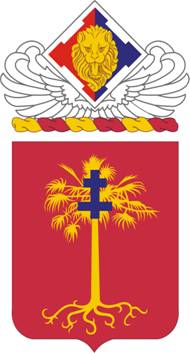
The 320th Field Artillery Regiment is a field artillery regiment of the United States Army. A parent regiment under the U.S. Army Regimental System, the 320th FAR currently has two active elements in the 101st Airborne Division : 1st Battalion, 320th FAR "Top Guns" in 2nd Brigade Combat Team; and 3rd Battalion, 320th FAR "Red Knight Rakkasans" in 3rd Brigade Combat Team. The regiment served with the 82nd Airborne Division during World Wars I and II, and regimental elements have served with the 82nd and 101st Airborne Division, the 193rd Infantry Brigade and the Berlin Brigade, and conducted combat operations in the Dominican Republic, Vietnam, Grenada, Operations Desert Shield and Storm, and the Global War on Terror.
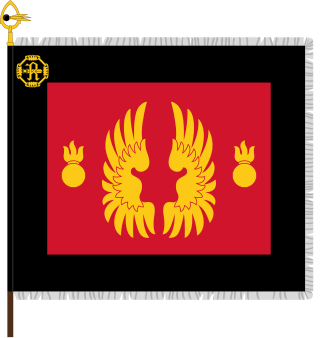
Kainuu Artillery Regiment is an artillery unit of the Kainuu Brigade, which is the northernmost one of the three readiness brigades of the Finnish Defence Forces.

The Steve Biko Artillery Regiment is a airborne artillery regiment of the South African Artillery.

The School of Artillery is the South African Army's specialized artillery training school
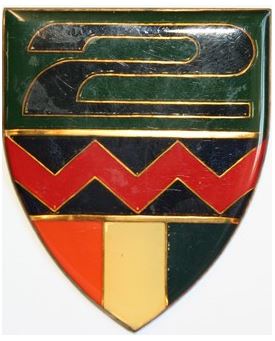
2 South African Infantry Battalion is a motorised infantry unit of the South African Army.
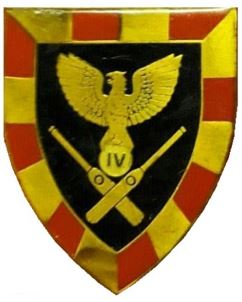
4 Artillery Regiment is based at Potchefstroom, responsible for the training of soldiers allotted to Field and Medium Artillery.
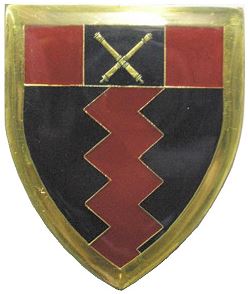
10 Artillery Brigade was a South African Defence Force formation designed for mass artillery barrages, mainly for the 7 South African Infantry Division or 8 South African Armoured Division, as well as an ad hoc formation during Operation Prone, when needed and detached and reattached where required. Smaller components would then be used at the battlegroup level.

The Regiment Universiteit Oranje-Vrystaat was an artillery regiment of the South African Artillery. As a reserve unit, it had a status roughly equivalent to that of a British Army Reserve or United States Army National Guard unit. It was part of the South African Army Artillery Corps.




















